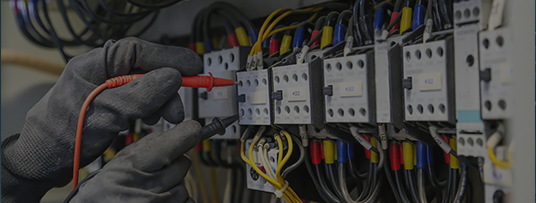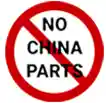Posted on September 26, 2024 griffin adams Aerospace
Relays and switches are essential parts of many systems that rely on electric circuits, controlling the flow of electricity to enable safe operation. While these components might seem similar at first glance with their role in managing electrical currents, they serve distinct purposes and have different designs tailored to meet such needs. In this blog, we will explore the differences between relays and switches, helping you find the most suitable choice for any project.
To start, a relay is an electrically operated switch that opens and closes circuits based on an external electrical signal. This mechanism provides a critical function by allowing smaller, low-power control circuits to manage much larger currents and voltages than they could handle directly. As a result, relays are indispensable in industrial automation, automotive systems, or large-scale electrical equipment for optimal management. Beyond this essential function, relays also may play a key role in protecting sensitive electronics. By effectively isolating the controlling circuit from the high-power controlled circuit, they can help safeguard control circuitry and any connected devices from electrical overloads, voltage spikes, or other faults that may arise in the high-power side of the system.
There are many types of relays available, with common examples including electromagnetic, solid-state, thermal, and time-delay variations. Electromagnetic relays are among the most widely used for general switching applications, operating by creating an electromagnetic field that controls the movement of internal contacts. Solid-state relays are another option that differ in that they lack moving parts, meaning they can perform millions of cycles without mechanical wear. This provides a higher level of efficiency, making them popular for high-speed operations and situations where long-term durability is essential. Meanwhile, thermal relays are used in environments where temperature changes need to trigger circuit control, where such devices serve as safety mechanisms in systems that are prone to overheating. Finally, time-delay relays are crucial in processes that require precise timing to control the start or stop of electrical devices, as they introduce a predetermined delay before activating or deactivating a circuit.
Switches, on the other hand, are manually or mechanically operated devices that control the flow of electricity by either interrupting or completing an electric circuit. This direct control allows users or objects to physically manipulate whether a circuit is connected or disconnected, making switches one of the simplest and most intuitive methods for manually managing electrical currents. As a result, they are found in electronic devices ranging from common household items like light switches and power buttons on computers to sophisticated industrial machinery.
Switches are also available in a variety of designs, each being engineered to address and accommodate specific functions and environments. For example, toggle switches are a type that feature a lever that moves back and forth to open or close a circuit, being commonly used in large equipment or industrial settings due to their robust design and straightforward operation. Rocker switches are similar, but use a rocking mechanism to alternate between states. These are often found on household appliances like lamps, where they provide simple activation of functions. Meanwhile, push-button switches are momentary-contact switches which are activated by pressing a button to briefly complete a circuit before returning to its original state, making them ideal for devices like keyboards or doorbells. Lastly, slide switches involve a sliding component to make or break a circuit, typically being used in compact devices like handheld electronics where space is limited.
When deciding between relays and switches for a particular application, the most important factor to consider is the level of control required. Switches typically require physical intervention, while relays operate automatically in response to electrical signals. As such, if your application involves automation or the need to control a high-power circuit using a low-power signal, then relays may be a better choice. Moreover, relays excel in situations where a user needs to control a circuit remotely or protect devices from electrical surges by isolating the control circuit from the powered circuit. However, if you need a reliable way to turn a circuit on or off without the complexity of external signals or additional components, a switch is likely the more suitable option.
For all of the electronic components you require, there is no better purchasing platform than Industrial Universe for securing desired products with time and cost savings. Explore our high-quality selection of parts at your own pace while keeping in mind that our Request for Quote (RFQ) forms are linked across our website for you to utilize at any time. We regularly offer responses in 15 minutes or less, curating purchasing solutions that meet all offered specifications as possible. This being said, see why so many customers trust ASAP Semiconductor as their strategic sourcing partner when you initiate procurement on Industrial Universe.

 The only independent
The only independent

 All Orders are Fulfilled in the U.S.A.
All Orders are Fulfilled in the U.S.A. All shipments must comply with U.S.A export laws.
All shipments must comply with U.S.A export laws. No exceptions.
No exceptions.

“We Proudly Support Intrepid Fallen Heroes Fund that serves United States Military Personal experiencing the Invisible Wounds of War : Traumatic Brain Injury (TBI) and Post Traumatic Stress (PTS). Please visit website (www.fallenheroesfund.org) and help in their valiant effort”.
We hope that you will visit us again the next time you need industrial parts and make us your strategic purchasing partner.
Request for Quote